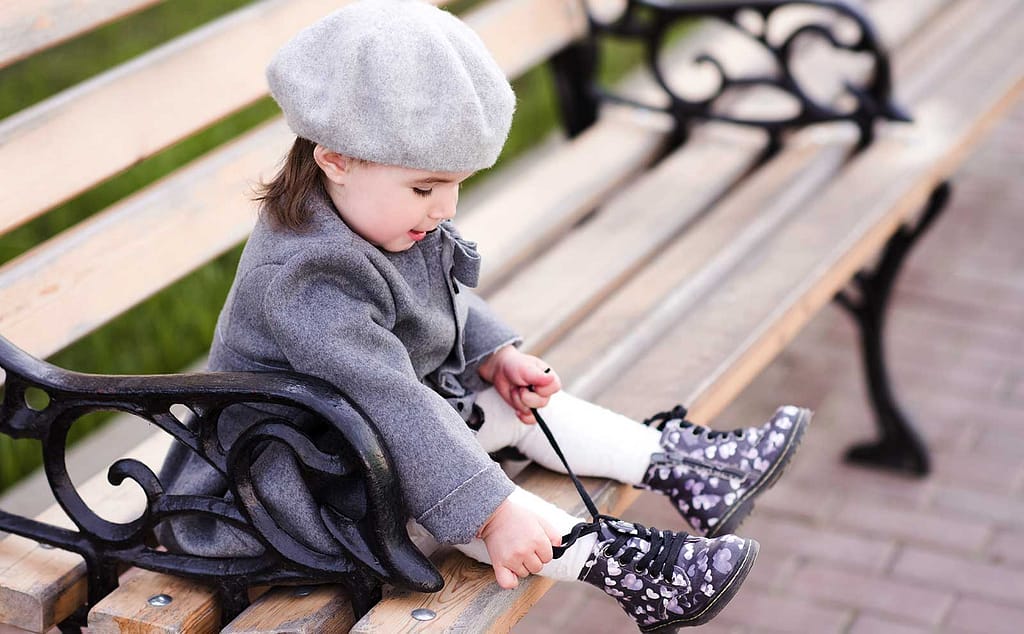If you have gone shoe shopping for children, you may have seen shoe sizes marked PS and wondered what PS means in shoes. The short answer is that PS means preschool. Like age groupings in a daycare, it comes between toddler and grade school.
Since children are not all the same size, you may need to buy this size for a small grade school child or a large toddler. So be sure to keep reading to learn more details. You will find some overlap in shoes, so read on to learn about that overlap.
What does PS mean in shoes?
As I already said, PS stands for preschool when found on shoes. While each shoe manufacturer has its sizing system, generally, these shoes will measure between 6.5 and 8.5 inches from the heel to the toe.
As I will cover in more detail in a little bit, you will see some overlap with other shoe sizes. Therefore, if your child is about to grow out of toddler shoes or is just starting to reach grade school shoes, you will also want to check PS shoes.
Generally, PS shoes fit children between the ages of one and four, but there is some variation depending on how fast the child grows.
Once you accurately measure your child’s foot size, which I will have more to say about in a minute, you can find the right size of shoes for them. Remember that there is some overlap, so you can get an even wider selection of shoes if your child falls into one of these groups.
For example, if your child’s foot measures 6.5 inches long, they wear a United States size 12.5 in children’s shoes, and you may see this shoe marked as a size 12.5 PS. Smart shoppers may want to consider what types of shoes are available worldwide to fit their child.
Therefore, if you are shopping with a company using European shoe sizes, you want to buy 30, but if you are shopping in the United Kingdom, buy size 11.5. If you are shopping in Japan, purchase size 19.
Once your child grows a little and wears size US 13, which you may see marked as US 13 PS, you will want to buy size 12 in the United Kingdom and size 31 in the European Union. If shopping in Japan, buy size 19.5.
When the child’s foot measures 7.625 inches or 19.4 centimeters long, buy US 13.5 PS. Shoes from the United Kingdom will also be marked 13.5, while those from the European Union will be marked 12.5. If shopping with merchants in Japan, you will need a size 20.
Preschool sizes continue until the child’s foot measures 8.5 or 21.6 centimeters long. At that time, you may see shoes in the United States marked size 3 PS while those in the United Kingdom are labeled two, and in the European Union, they are marked 34. In Japan, they are marked 22.
In the next section, I will provide more details in chart form so you can easily find the information for your child.
PS shoe size chart
Shoe manufacturers worldwide use shoe lasts from only a handful of manufacturers when manufacturing shoes. However, the shoe’s design can cause it to fit differently. The best procedure is to take your child shoe shopping with you in the late afternoon as their feet are likely to be the largest at that time. Use this chart to compare shoe sizes.
| Child’s foot size in inches | Child’s foot size in centimeters | US PS shoe size | European Union child’s shoe size | United Kingdom Child’s shoe size | Japan child’s shoe size |
| 6.25 | 15.9 | 9.5 PS | 26 | 8.5 | 16.5 |
| 6.5 | 15.9 | 10 PS | 27 | 9 | 17 |
| 6.625 | 16.8 | 10.5 PS | 27 | 9.5 | 17.5 |
| 6.75 | 17.1 | 11 PS | 28 | 10 | 18 |
| 7 | 17.8 | 11.5 PS | 28 | 10.5 | 18.5 |
| 7.25 | 18.1 | 12 PS | 30 | 11 | 18.5 |
| 7.25 | 18.4 | 12.5 PS | 30 | 11.5 | |
| 7.5 | 19.5 | 13 PS | 31 | 12 | 19.5 |
| 7.625 | 19.4 | 13.5 PS | 31 | 12.5 | 20 |
| 7.75 | 19.7 | 1 PS | 32 | 13 | 20.5 |
| 8 | 20.3 | 1.5 PS | 33 | 13.5 | 21 |
| 8.125 | 20.6 | 2 PS | 33 | 1 | 21.5 |
| 8.5 | 21.6 | 2.5 PS | 34 | 2 | 22 |
I have included a wide range of sizes here because different manufacturers use their classification systems. In most cases, a child will be between the ages of four and seven when wearing preschool shoes.
How many sizes are in PS?
Different manufacturers include different sizes in their preschool shoes. Most shoe companies have 12 shoe sizes in their children’s lineup, but they may not label all of them with PS.
For example, Nike runs from 10.5 C to 3 Y. I will discuss what these different letters mean in just a minute, so you will not be confused when you see them on a website or in a brick-and-mortar store.
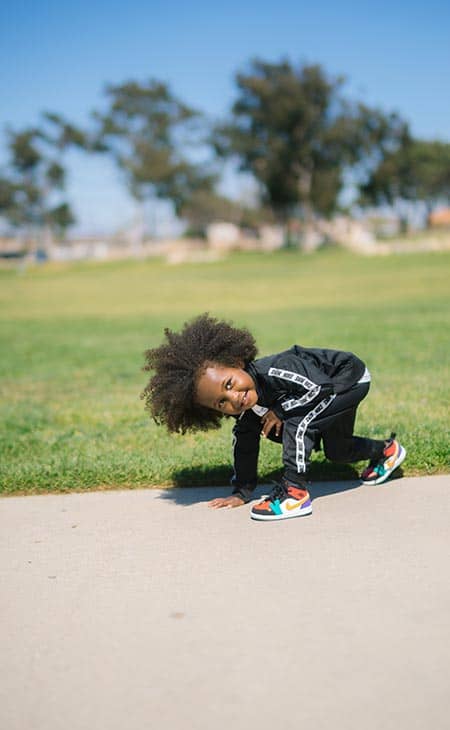
Adidas labels their smaller kids’ shoes with a k, and they run from size 10.5 K to 3. These shoes will fit children with feet measuring from 6.5 to 8.3 inches.
Like Nike, Puma starts their preschool shoes at U.S. size 10. They end the preschool range at 3.5. Puma chooses to call children’s shoes bigger than that youth. They do not use specific letters to identify their shoes.
Therefore, the answer to how many sizes there are in PS shoes varies a little, but generally, there are nine to 12 sizes of preschool shoes. As I have already discussed, some companies lump them in their children’s shoes and label them with a C, so you may see many more.
Are there any other ways to describe shoe sizes? What are they?
Yes, you can find a variety of labels attached to shoes. You may see a W for wide or an N for narrow when you buy your shoes. It is the same way with children’s shoes, except that most labels refer to the child’s age.
GS
In addition to PS, you may also see GS and wonder what GS means in shoes. The answer is grade school, and if a company uses this label, they generally refer to shoes between sizes 3.5 and 7. When advertising or labeling shelves, these shoes are often called juniors, and they are usually worn by children who are in elementary or primary school.
These are often the largest shoes designed for children, although some companies also offer youth shoes. You will find some minor overlap between men’s and women’s shoes and the larger sizes of grade school shoes.
While there are some differences between companies, these shoes are generally designed for children’s feet that are bigger than 7.625 inches and smaller than 9.75 inches or bigger than 19.5 centimeters and 24.7 centimeters.
When the sizes overlap, consider looking at the shoe’s design. PS shoes often have cartoon characters that interest preschoolers, while grade school shoes often have subject matters attractive to older children. At the other end of the spectrum, some children are ready for a more mature-looking shoe sooner than their peers.
BG
The GS category can further be broken down by sex. BG stands for boys grade school, and these shoes generally have designs that appeal to primary-age boys, such as superheroes. Unlike adult shoes, there is no men’s and women’s sizing, so you can use this label to ensure that you buy shoes that a boy is likely to love.
The sizes of BG shoes are the same as those of GS shoes. Therefore, manufacturers design them to fit feet that are between 7.625 inches and 9.75 inches or between 19.5 centimeters and 24.7 centimeters.
Depending on the child, this can be vital because their feet may develop differently. Generally, a boy’s foot has a smaller ball and a flatter arch than a girl’s foot. Boy’s feet also tend to grow wider than girl’s feet. Therefore, you need to buy shoes that will fit the shape of the child’s foot.
Furthermore, shoes for boys usually have shorter heels and are wider than for girls. Doctors know that people who wore the wrong shoes as a child are more likely to develop foot problems as an adult. Shoes for boys tend to have a rougher sole than shoes for girls to provide the proper support.
GG
GG stands for girl’s grade school shoes. Like boys, they are a subclassification of grade school shoes. These shoes often have a higher heel than the male options because of the way that most girls’ feet grow. They also are narrower than boys’ grade school shoes. Like BG, these shoes start at size 3.5 and go to size 7 with most shoe companies.
One of the differences you may notice between BG and GG shoes is the types of shoes. While you will find some athletic shoes, you will also find dress shoes, like pumps, heels, dress sandals, loafers, and oxfords.
When shopping for girls’ shoes, consider the heel height. Doctors have found that wearing heels higher than 1.5 inches for long periods can shorten the tendons in a girl’s legs, leading to further issues in adulthood.
Doctors recommend that girls never wear high heels for more than four hours in a row. Block heels are easier to walk in than pointed heels. You should also consider the toe box. The girl’s toes must have room to spread out when walking.
Y
You may also see shoes labeled with a Y after the size, and the Y stands for youth. Generally, these shoes will fit children ages 7 to 12, although some companies reserve the Y label for those wearing shoes right before they switch over to adult sizes.
Many youth can also wear men’s and ladies’ shoes and vice versa. Men’s shoe sizes are based on kid’s sizes, so whatever size you wear in youth shoes, you would also wear in men’s shoes. For example, if you wear a youth size 3.5, you would also wear a men’s 3.5. Consider this conversion chart.
| U.S. Youth shoe size | U.S. Men’s shoe size | U.S. Women’s shoe size |
| 3.5 Y | 3.5 | 5 |
| 4 Y | 4 | 5.5 |
| 4.5 Y | 4.5 | 6 |
| 5 Y | 5 | 6.5 |
| 5.5 Y | 5.5 | 7 |
| 6 Y | 6 | 7.5 |
| 6.5 Y | 6.5 | 8 |
| 7 Y | 7 | 8.5 |
Knowing this may allow you to save money because youth shoes are usually cheaper than adult shoes, and it also allows you to shop a much wider variety of shoes.
TD
When you see a pair of shoes with TD after the size, it stands for toddlers. You may also see these shoes marked with only the letter T. These shoes are smaller than GS shoes.
Toddler shoes can generally be broken down into three different groups. The tiniest shoes are in the baby group. These shoes typically come in 10 different sizes and are designed for the baby’s first year of life. Especially as the child starts trying to stand, look for flexible shoes with good traction on them as it will help them keep their balance better.
The second group is generally called walkers, designed for children from 12 to 24 months. Many shoe companies offer six sizes of these shoes that range in size from 4.5 to seven. These shoes should be lightweight with an extremely flexible sole. Opt for shoes that are adjustable in width so that you can change them as your child’s first changes shape.
The third group is toddler shoes designed for children two to four years old. They continue the numbering system from the walkers and run from 7.5 to 12. When trying new shoes, ensure there is little room at the end for the child’s foot to grow.
How to measure your kids’ feet to get the perfect shoes?
You should measure your child’s feet in the evening or late afternoon using a piece of paper and a pen. The paper needs to be big enough that you can trace your child’s whole foot on it.
You will also need a ruler. You can choose between metric or inches, depending on which you are more familiar with using. Try to measure your child’s feet when they are well rested and cooperative.
The first thing you should do is gather your supplies. You need a pen, paper, and ruler, and your child wearing the socks that they will usually be wearing with their shoes.
Lay the paper on the floor and have your child stand on top of it. The child should have equal weight on both feet, and they should be standing up straight. As it may be difficult to see if your child is standing up straight while you are tracing their foot, you may want to recruit a friend to help you.
Carefully trace around your child’s foot. You will want to trace around the entire foot. Using a fine-tip pen will help you get close to the foot.
Once you have one foot traced, trace the other foot. It is not unusual for people to have two different sizes of feet. When you have both feet traced, use the ruler to measure your tracing. You should measure the length and width of each foot. Measuring twice is a great idea to ensure you do not make a mistake.
Finally, use the measurements from the biggest foot and our chart to determine your child’s shoe size. If the child is in between sizes, move up one size. You will want to repeat this process frequently as it is not unusual for a kid’s feet to grow up to a half size every two months.
Why buy PS size shoes for kids?
PS shoes are a necessary stage your children will go through, but there are reasons these shoes are ideal for them. One of the reasons that these shoes are essential is that your child is learning balance at this age. Therefore, they need the good foundation that these shoes provide.
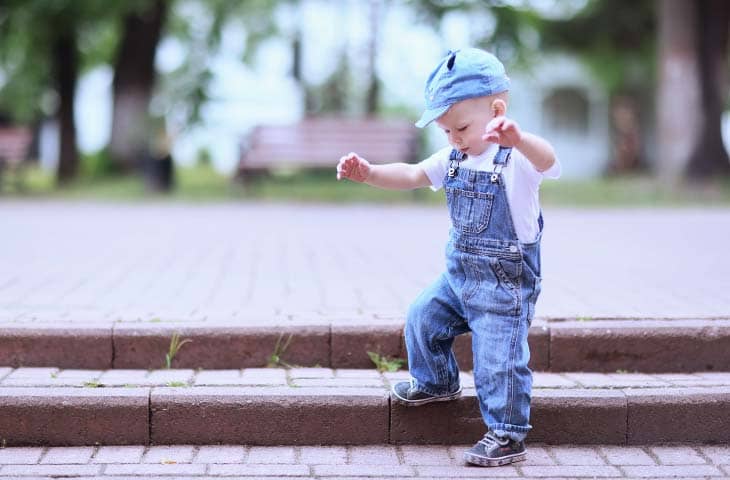
This is especially true of high-top PS shoes that help to stabilize the foot and ankle as the child explores the world and walks on different surfaces. Most PS shoes also the toes. Therefore, there is less chance they will stub one as they investigate the world.
If you have ever stubbed your toe by kicking a piece of furniture while barefoot, you know how much it hurts, and wearing PS shoes stops your child from experiencing this pain.
Your preschooler is also becoming more independent at this age. So they need shoes designed to allow them to put them on and take them off easily.
Slip-on and Velcro options are ideal, and most fasteners are big enough for little hands to manipulate easily. This allows your child to practice their small muscle skills daily.
The bright, vibrant colors often seen on PS shoes help children remember color names as they associate the color word with their shoes. You can even turn it into a game by asking your child to bring you shoes of a particular color.
PS shoes also help protect the child’s feet. Since wearing shoes when walking is a requirement in many businesses, PS shoes allow your child to accompany you to various places, helping to enlarge their world.
State and federal laws require people to wear shoes in many places. In addition, your child’s feet will stay cleaner when they wear shoes while exploring the world.
Your arms will get really tired if you try to carry your preschooler everywhere, and it is not healthy for them. Wearing PS shoes helps protect feet from surfaces that might harm them, like asphalt, which can reach over 120 degrees Fahrenheit in the summertime. Choosing shoes with thick soles can help protect them from the heat, as preschoolers still have tender feet.
PS shoes are lightweight. This helps ensure that the child’s muscles and tendons are not used too much. Therefore, they can keep going throughout the day without damaging this body part.
What material is best for PS shoes?
When shopping for PS shoes, you will discover they are made from various materials. Knowing the strengths and weaknesses of each one will help you make an informed decision. Then, your child will look extra sharp as they run around the daycare or the park.
Leather
Leather shoes can be an excellent investment. Most types of leather have some stretch to them so they can accommodate the changing size of the preschooler’s foot while it is growing. Leather is very breathable, so your child’s foot will stay more comfortable.
This is especially an advantage when going somewhere special where you need the child to keep their shoes on for a long time. Leather also does a great job of protecting the foot, but it is not as flexible as other options on our list.
Before buying leather shoes, think about their care. Most are not machine washable. Therefore, you will need to wash them by hand. Manufacturers often make PS dress shoes out of leather.
Canvas
Canvas shoes can often be washed, making them easy to keep clean. You can find canvas shoes in a variety of colors. Since these shoes are usually inexpensive, it is easy to buy options that match many outfits in your child’s closet.
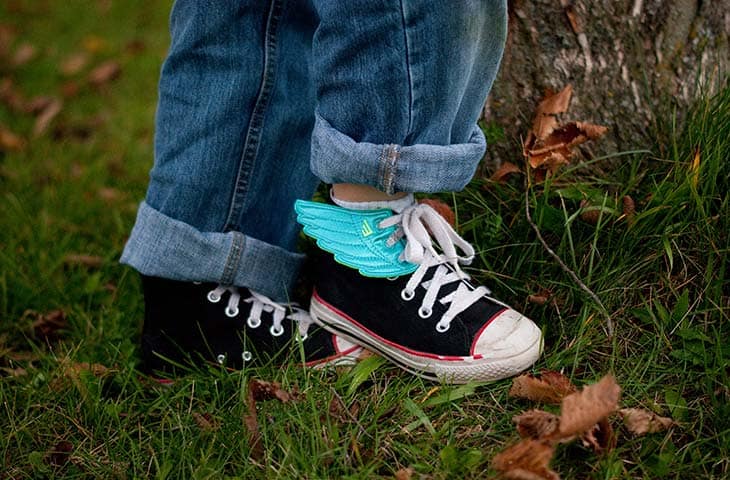
Carefully consider the amount of support that the canvas shoe has built into them. Some shoes are almost flat inside, which may not offer enough support for preschoolers who love to climb and jump.
Most canvas shoes also have minimal stretch to them. Therefore, the shoe that fit your child yesterday may suddenly not fit them today. It is also relatively easy for children to cut canvas while playing.
Vegan leather
Especially if you care about the world that your child grows up in, vegan leather shoes can be a great option because they have a small carbon footprint. Depending on the materials used to make the leather, vegan leather shoes are usually durable and can be dyed in many different colors. Most options have some stretch in them, which helps them accommodate a growing foot.
This material is sometimes made using oil, which may make them more expensive. Most options are not very breathable, so they make your child’s foot hot or set up conditions for athlete’s foot or other medical issues. This artificial leather is not very flexible.
Gore-Tex
Especially if your preschooler frequently encounters water puddles or snow, PS shoes made from Gore-Tex may be ideal because it is difficult for water to penetrate them.
At the same time, this option does a great job of letting moisture pass out, which may help your child stay more comfortable and help eliminate stinky feet. Some Gore-Tex fabric can stretch up to 20 percent.
In most cases, Gore-Tex is a product added to the top layer of another fabric, and it may wear off over time. Therefore, if you often pass on your child’s shoes, you may want to consider that the substance may no longer be present.
Mesh
Mesh shoes are very breathable, so your child may not be as tempted to take off his shoes. They are also very flexible, which can be a huge advantage when a child’s foot grows quickly. These shoes also tend to be very lightweight. They usually offer good support without being constricting.
While mesh shoes have many advantages, they also have some disadvantages. They tend to be dust magnets, so expect to need to clean the shoes more often. The tiny openings in the mesh tend to snag on many things, so they may not last as long as some other choices.
Lycra
Lycra is a very soft fabric, so your child will likely love the feel of these shoes. This fabric is often combined with other materials, resulting in very flexible shoes. This fabric usually has lots of give, so it is difficult to tear them while playing.
Lycra shoes are very warm and not very breathable. Therefore, your child’s foot may get hot when wearing them for a long time. Lycra is exceptionally absorbent, so if the shoes get wet, it will take them longer to dry.
Weighing the pros and cons of the different choices will allow you to come up with the best solution for your money when buying PS shoes.
How to clean children’s shoes
The great news is that many children’s shoes can be washed in the washing machine, and some can even be dried in the dryer. Before washing and drying PS shoes, make sure to look for a label inside the shoes that tells you if they can be washed.
Sometimes, washing PS shoes is not enough to get them clean. In that case, you will want to follow these tips:
Pull the shoe apart
Before cleaning the shoes, pull them apart. Most preschool shoes have removable insoles; you will want to pull them out and wash them separately. Additionally, if the PS shoes have laces, remove them and let them soak in a vinegar and water solution, and air dry before putting them back in your shoes.
Use a dry brush

If there are areas on the shoe where mud and other substances have built up, then brush these areas while the shoe is dry. Using an old toothbrush can help. Always brush the shoes in the direction of the grain.
Spot clean
Mix equal parts of vinegar and water. Then, dip a cotton swab in it to take out small stains. Work from the center to the outside of the stain so you do not accidentally spread it. Let the shoes dry completely before letting your child wear them.
Use protective coatings when possible
Spray-on protective coatings are a great way to protect your PS shoes, depending on the material that they are made from. If they are leather, then use saddle soap to clean them. After you wipe off any suds, you must let them air dry. If the shoes seem dry, finally use a leather conditioner.
Protect Your Shoes
Heat, humidity, and sunlight are enemies of PS shoes. They will last longer if you have two or three pairs for your child to wear and trade out regularly. You should let the shoes air dry before putting them in a clear plastic bag, which protects them from dirt. Never store the shoes where sunlight can hit on them.
Replace Shoes as Needed
You should budget to replace your child’s PS shoes regularly. Just like adult shoes, they should be replaced every few months. Examine the tread on the bottom of the shoe. If it seems to be wearing unevenly, then it is time for a new pair. Remember that little feet can grow very quickly, so you may need to replace their shoes regularly.
Is it important to wear the right shoes for kids?
Yes, wearing the right shoes is vital for children. It provides the support that they need to develop physical skills. The proper shoes also help to keep their feet safe. Furthermore, children with great shoes usually have better self-esteem, making them more ready to tackle their world.
Helps preschoolers explore their world
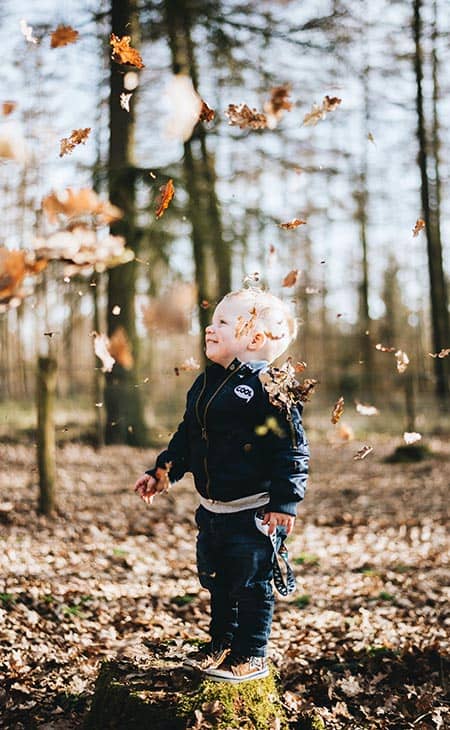
You want your children up moving instead of sitting on the couch playing a game. Comfortable shoes are critical to that. Think about how much you do not want to move when your feet hurt. The same is true of preschoolers. Wearing comfortable shoes encourages them to interact with the world, which is how they learn.
Stops stinky feet
No one wants to be around a preschooler with stinky feet. Since you can never be too sure what your child may decide to explore, PS shoes that are breathable help keep their feet healthier as the air exchanges better, so their feet stay healthier. If blisters, fungus, and other foot problems become bad enough, you may even have to take the child to the doctor, and no one wants that.
Improves flexibility
As I have mentioned a couple of times, the right PS shoes help provide a stable platform for your child. You must only spend a few minutes around a preschooler to wonder how they get into and out of some positions. Wearing a good pair of flexible PS shoes helps them keep their traction.
Prevents muscle and tendon fatigue
Preschoolers are just building muscles and tendons that they will rely on for the rest of their lives. The right pair of PS shoes helps in this process by not being too heavy. Additionally, they help stabilize the child, making them less prone to injury. They also adjust so that your child’s foot has plenty of room to grow as nature intended.
What to consider when buying PS shoes?
There are many factors to keep in mind when buying PS shoes. Since it is a purchase that may impact your child’s development, it is vital to take your time and buy the best shoes for them. Parents should also consider the purpose of the shoes, such as daycare, play, or special occasions.
Fit
The shoe needs to fit the preschooler properly. It needs to be the right length and width. Additionally, the arch support should be under the child’s foot. While it may be tempting to buy shoes that are a size or two too big, that usually means the arch support is not in the right place, so the shoe does not support the foot properly. You will also want to check to ensure that the shoes do not slip on your preschooler’s feet, which can cause blisters.
Quality
Some children’s PS shoes are poorly constructed. Examine where the sole meets the upper to ensure it is attached firmly. Run your hand over the entire shoe to make sure there are no rough spots that can scratch or cut your preschooler. If the shoe has embellishments, make sure they are firmly attached.
Purpose
Manufacturers make different PS shoes for various purposes. Therefore, before you buy a pair of shoes for your preschooler, consider where they will wear them. For example, patent leather shoes with a small buckle may be ideal for wearing on special occasions, while canvas sneakers may be great as play shoes. Your child needs more than one pair of shoes, which will last longer when you allow them to air dry completely between wearings.
Breathability
Your child’s feet need to be able to breathe. Therefore, buy shoes that allow moisture to pass out of them and air into the child’s foot. Hot feet will make your child miserable, and you will also be miserable. If moisture gets trapped in the shoe, fungus and other medical conditions can start, making everyone miserable.
Cleaning
Everyone leads a busy life, including your preschooler who wants to wear their favorite pair of PS shoes regularly. Therefore, think about how easy it is to clean the shoes. You do not want them running around in dirty shoes, but you do not want to spend half the night cleaning dirty footwear.
Fasteners
Most preschoolers love to be independent. Therefore, look for PS shoes that they can put on and take off by themselves. Depending on your child’s maturity level and how well they like to wear shoes, slip-ons may be a good answer, but if you have a child who hates shoes, then you may spend precious time wondering where they took off their shoes.
Options with Velcro fasteners that are big enough for little hands can be a great choice. I recommend avoiding options that tie in because the independent preschooler may find tying them frustrating.
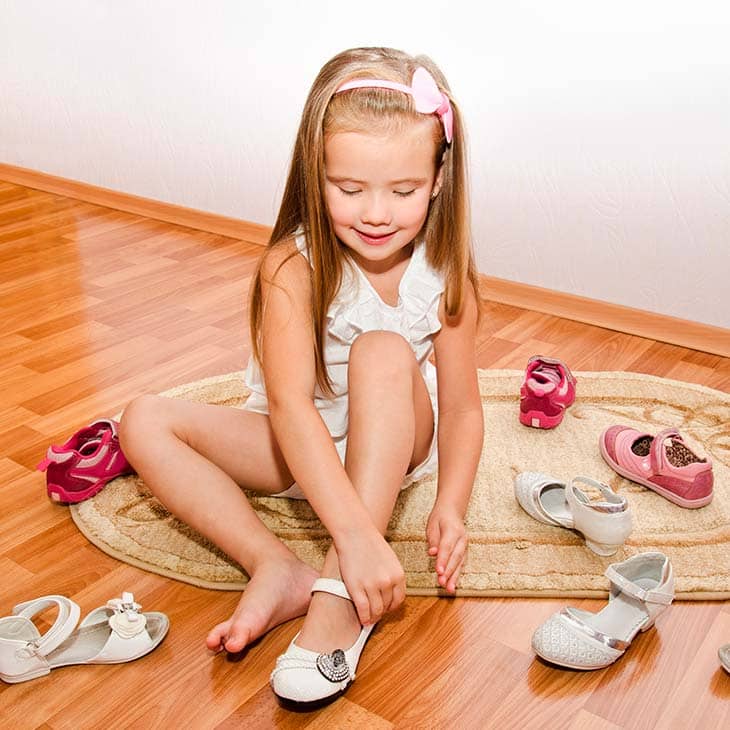
I hope you have enjoyed learning more about PS shoes. If you are a parent, this guide should help you the next time you go shoe shopping. Knowing the proper size may even let you slip out of the house to go shoe shopping by yourself and enjoy a quiet moment.
If you are a parent who is thinking of asking someone to purchase PS shoes for your child, then share this post with them. They will appreciate the advice that it contains as it may have been several years since they shopped for shoes for preschoolers.
If you have any questions, be sure to ask them. It is how we all learn.
While your preschooler is playing, consider reading some of our other useful fashion blog posts. Each is filled with helpful information.
